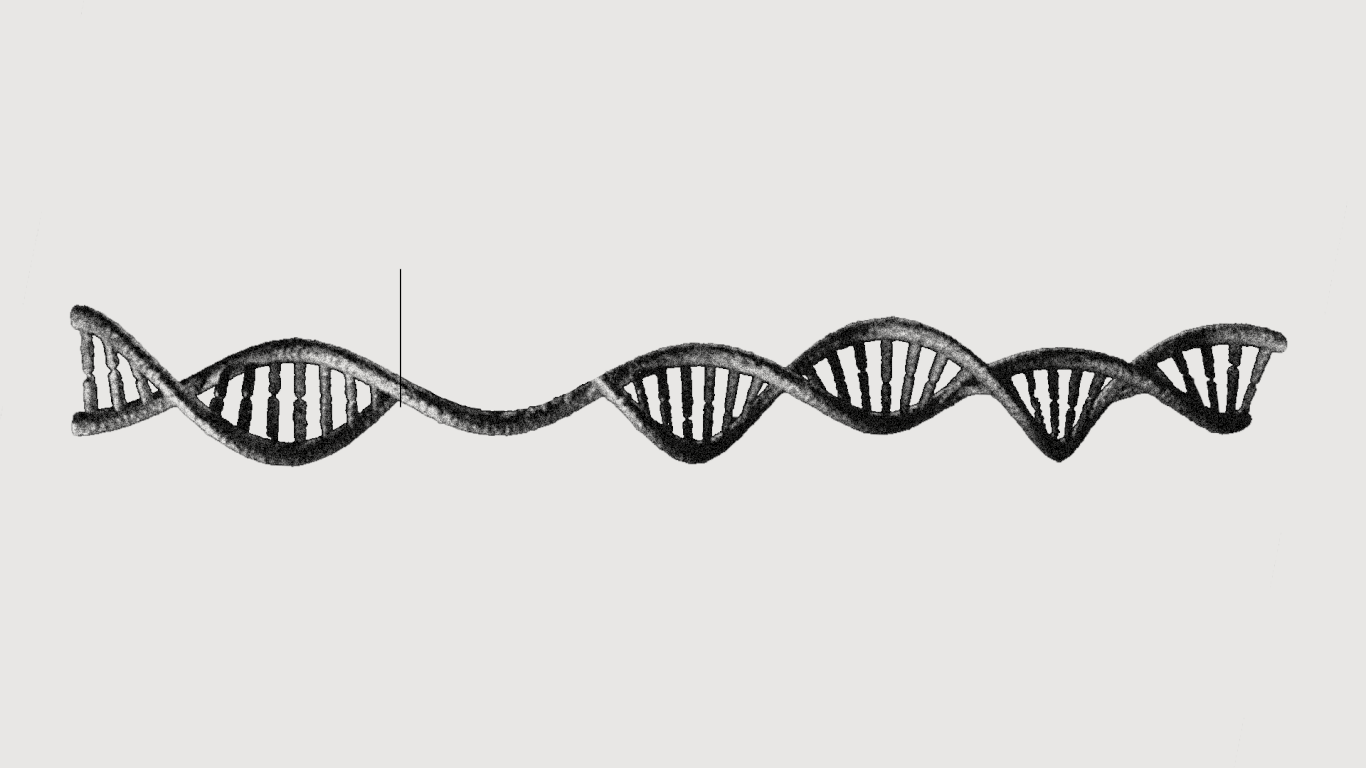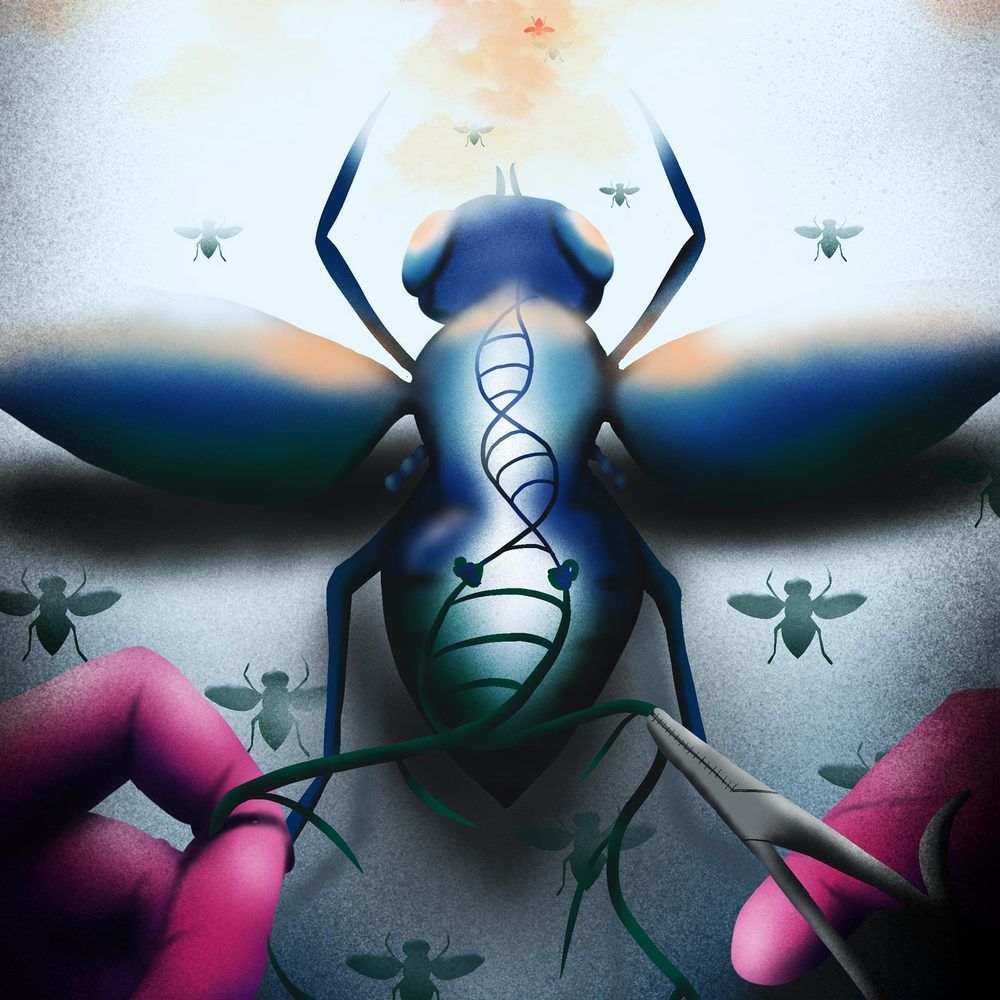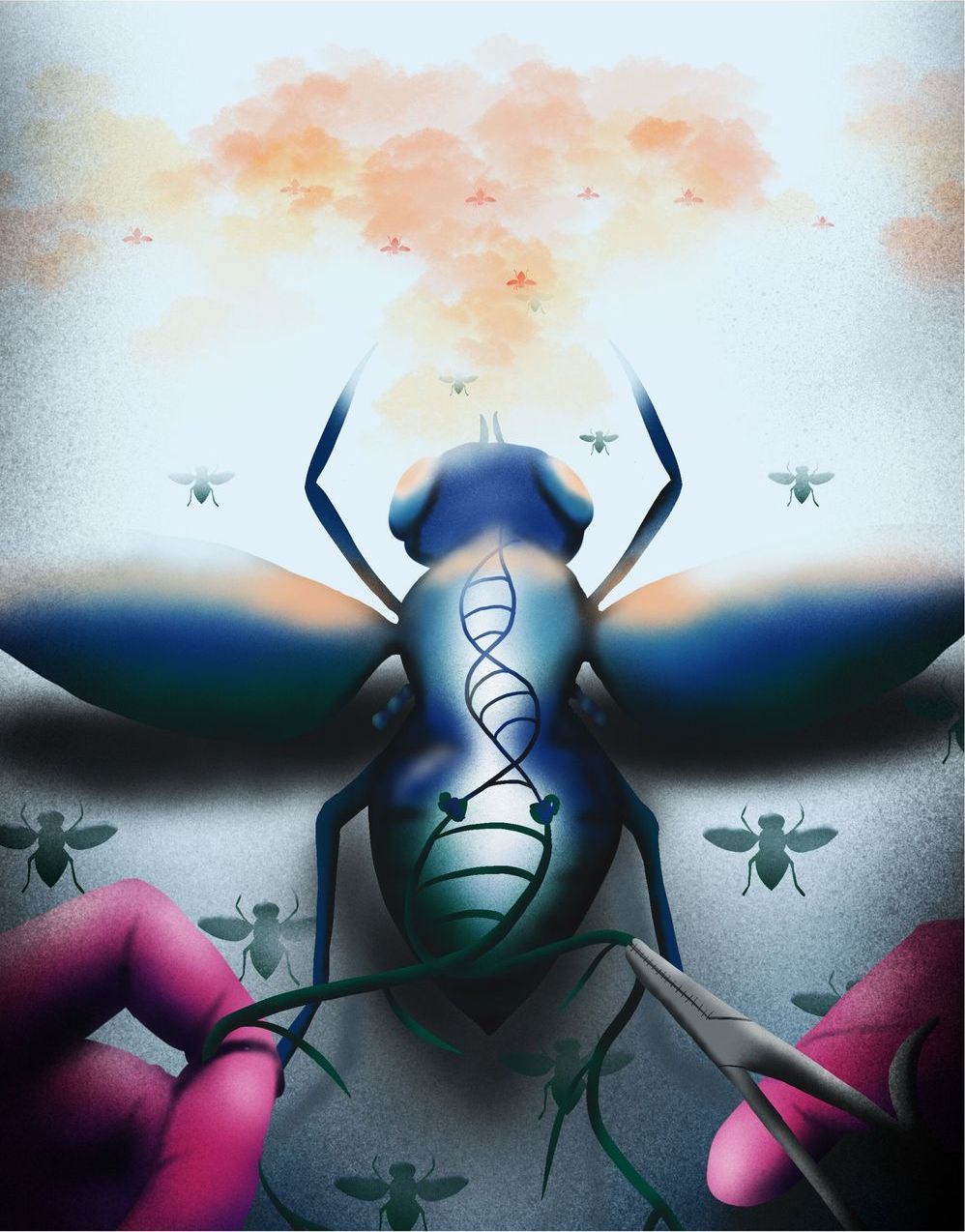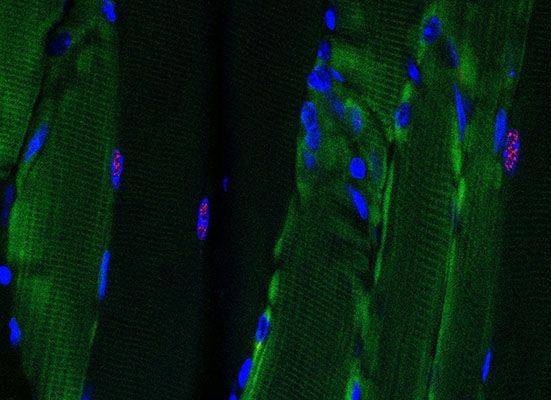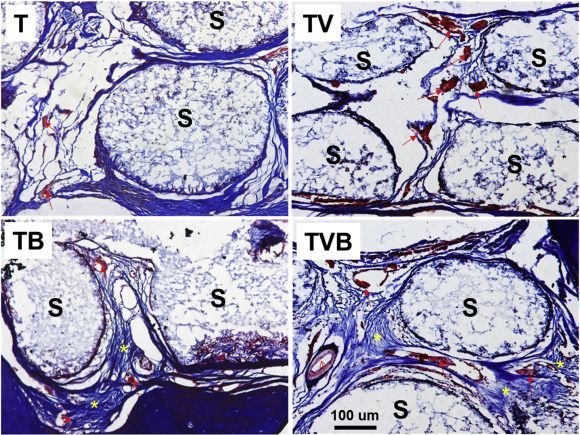Founder of MakeLoveNotPorn, and internationally famous advertising executive and public speaker, talks of Sex-Tech, a burgeoning trillion dollar industry, on the ideaXme show — #Ideaxme #MoveTheHumanStoryForward #CindyGallop #MakeLoveNotPorn #SexTech #Sexuality #SociallyAcceptableSex #Pornography #Porn #Orgasm #ErectileDysfunction #Biohacking #Viagra #Wellness #Health #Longevity #DisruptAging #Aarp #IfWeRanTheWorld #BartleBogleHegarty #Advertising #PublicRelations #TEDTalk #IraPastor #Bioquark #Regenerage AARP Disrupt Aging.
Archive for the ‘bioengineering’ category: Page 106
Oct 3, 2020
Synthetic biology brings the hard science of engineering to the basics of life
Posted by Genevieve Klien in categories: bioengineering, biological, computing, science
Synthetic biology startups raised some $3 billion through the first half of 2020, up from $1.9 billion for all of 2019, as the field brings the science of engineering to the art of life.
The big picture: Synthetic biologists are gradually learning how to program the code of life the way that computer experts have learned to program machines. If they can succeed — and if the public accepts their work — synthetic biology stands to fundamentally transform how we live.
What’s happening: SynBioBeta, synthetic biology’s major commercial conference, launched on Tuesday, virtually bringing together thousands of scientists, entrepreneurs, VCs and more to discuss the state of the field.
Sep 29, 2020
New Genetic Systems Created by Biologists to Neutralize Gene Drives
Posted by Genevieve Klien in categories: bioengineering, biotech/medical, genetics
Two active genetics strategies help address concerns about gene-drive releases into the wild.
In the past decade, researchers have engineered an array of new tools that control the balance of genetic inheritance. Based on CRISPR technology, such gene drives are poised to move from the laboratory into the wild where they are being engineered to suppress devastating diseases such as mosquito-borne malaria, dengue, Zika, chikungunya, yellow fever and West Nile. Gene drives carry the power to immunize mosquitoes against malarial parasites, or act as genetic insecticides that reduce mosquito populations.
Although the newest gene drives have been proven to spread efficiently as designed in laboratory settings, concerns have been raised regarding the safety of releasing such systems into wild populations. Questions have emerged about the predictability and controllability of gene drives and whether, once let loose, they can be recalled in the field if they spread beyond their intended application region.
Sep 27, 2020
Harvard Professor Wants to Slow Down & Reverse Aging: David Sinclair’s Approach For a Longer Life
Posted by John Davies in categories: bioengineering, biotech/medical, genetics, information science, life extension, robotics/AI

David Sinclair wants to slow down and ultimately reverse aging. Sinclair sees aging as a disease and he is convinced aging is caused by epigenetic changes, abnormalities that occur when the body’s cells process extra or missing pieces of DNA. This results in the loss of the information that keeps our cells healthy. This information also tells the cells which genes to read. David Sinclair’s book: “Lifespan, why we age and why we don’t have to”, he describes the results of his research, theories and scientific philosophy as well as the potential consequences of the significant progress in genetic technologies.
At present, researchers are only just beginning to understand the biological basis of aging even in relatively simple and short-lived organisms such as yeast. Sinclair however, makes a convincing argument for why the life-extension technologies will eventually offer possibilities of life prolongation using genetic engineering.
Sep 18, 2020
Engineering Living Organisms Could Be the World’s Biggest Industry
Posted by Lola Heavey in categories: bioengineering, biotech/medical
Wouldn’t it be better to have a creature, something furry and warm that had the ability to produce perfect breast milk? A non-sentient, biological organism that has been engineered to produce milk nutritionally equivalent to mother’s milk? A milk Tribble? That type of technology would be awesome for babies.
Karl Schmieder: Is there a biological technology that you wished you had?
Andrew Hessel: I want the enzymatic DNA synthesizer that will be at least a thousand times better than what we have today. Next-generation sequencing technology massively accelerated our ability to read DNA. An enzymatic DNA synthesizer could be the equivalent accelerator for engineered biology. If you can synthesize DNA faster, then you can conduct more experiments and learn faster. That’s what I’d like to see. More people programming life.
Sep 18, 2020
Biologists create new genetic systems to neutralize gene drives
Posted by Genevieve Klien in categories: bioengineering, biotech/medical, genetics
In the past decade, researchers have engineered an array of new tools that control the balance of genetic inheritance. Based on CRISPR technology, such gene drives are poised to move from the laboratory into the wild where they are being engineered to suppress devastating diseases such as mosquito-borne malaria, dengue, Zika, chikungunya, yellow fever and West Nile. Gene drives carry the power to immunize mosquitoes against malarial parasites, or act as genetic insecticides that reduce mosquito populations.
Although the newest gene drives have been proven to spread efficiently as designed in laboratory settings, concerns have been raised regarding the safety of releasing such systems into wild populations. Questions have emerged about the predictability and controllability of gene drives and whether, once let loose, they can be recalled in the field if they spread beyond their intended application region.
Now, scientists at the University of California San Diego and their colleagues have developed two new active genetic systems that address such risks by halting or eliminating gene drives in the wild. On Sept.18, 2020 in the journal Molecular Cell, research led by Xiang-Ru Xu, Emily Bulger and Valentino Gantz in the Division of Biological Sciences offers two new solutions based on elements developed in the common fruit fly.
Sep 15, 2020
Twist on CRISPR Gene Editing Treats Adult-Onset Muscular Dystrophy in Mice
Posted by Jeff Myers in categories: bioengineering, biotech/medical, genetics
Myotonic dystrophy type I is the most common type of adult-onset muscular dystrophy. People with the condition inherit repeated DNA segments that lead to the toxic buildup of repetitive RNA, the messenger that carries a gene’s recipe to the cell’s protein-making machinery. As a result, people born with myotonic dystrophy experience progressive muscle wasting and weakness and a wide variety of other debilitating symptoms.
CRISPR-Cas9 is a technique increasingly used in efforts to correct the genetic (DNA) defects that cause a variety of diseases. A few years ago, University of California San Diego School of Medicine researchers redirected the technique to instead modify RNA in a method they call RNA-targeting Cas9 (RCas9).
In a new study, publishing September 14, 2020 in Nature Biomedical Engineering, the team demonstrates that one dose of RCas9 gene therapy can chew up toxic RNA and almost completely reverse symptoms in a mouse model of myotonic dystrophy.
Sep 11, 2020
Cryogenic 3D Printing Improves Bioprinting for Bone Regeneration
Posted by Malak Trabelsi Loeb in categories: 3D printing, bioengineering, bioprinting, nanotechnology
Researchers from China continue in the quest to improve methods for bone regeneration, publishing their findings in “Cryogenic 3D printing of dual-delivery scaffolds for improved bone regeneration with enhanced vascularization.”
A wide range of projects have emerged regarding new techniques for bone regeneration—especially in the last five years as 3D printing has become more entrenched in the mainstream and bioprinting has continued to evolve. Bone regeneration is consistently challenging, and while bioprinting is still relatively new as a field, much impressive progress has been made due to experimentation with new materials, nanotubes, and innovative structures.
Cell viability is usually the biggest problem. Tissue engineering, while becoming much more successful these days, is still an extremely delicate process as cells must not only be grown but sustained in the lab too. For this reason, scientists are always working to improve structures like scaffolds, as they are responsible in most cases for supporting the cells being printed. In this study, the authors emphasize the need for both “excellent osteogenesis and vascularization” in bone regeneration.
Sep 9, 2020
Unity in Knowledge: From Ethics and Islam to Exponential Technology and Robotics
Posted by Ira S. Pastor in categories: bioengineering, ethics, mathematics, physics, robotics/AI, transhumanism

Discussing STEM, the future, and transhumanism with an islamic scholar / scientist.
Ira Pastor, ideaXme life sciences ambassador interviews Imam Sheikh Dr. Usama Hasan, PhD, MSc, MA, Fellow of the Royal Astronomical Society and Research Consultant at the Tony Blair Institute For Global Change.
Sep 4, 2020
Vision-free MIT Cheetah
Posted by Quinn Sena in categories: bioengineering, mathematics, physics, robotics/AI
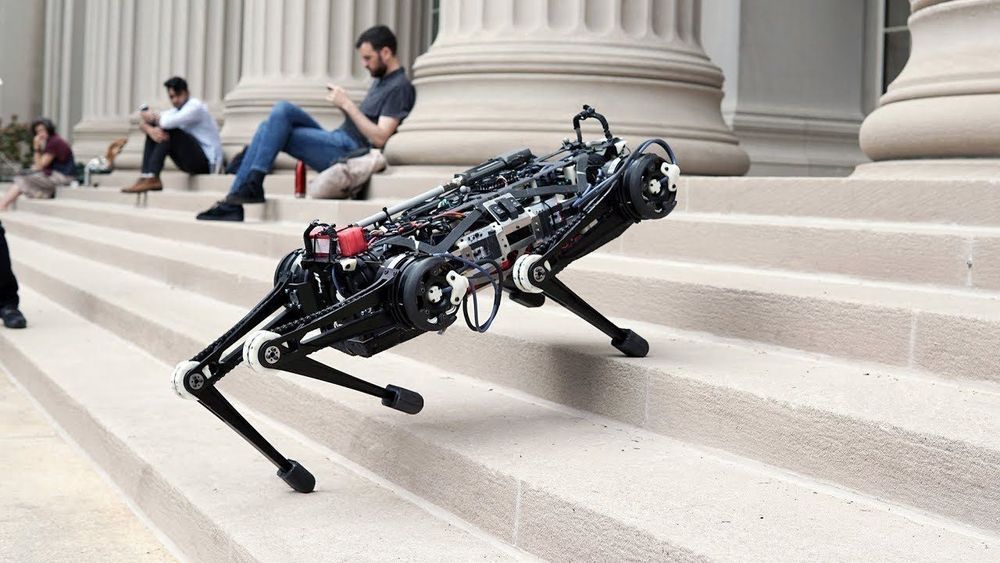
MIT’s Cheetah 3 robot can now leap and gallop across rough terrain, climb a staircase littered with debris, and quickly recover its balance when suddenly yanked or shoved, all while essentially blind.
Watch more videos from MIT: https://www.youtube.com/user/MITNewsOffice?sub_confirmation=1

